Superresolution based on optical techniques
Super resolution is one of the most fascinating and applicable fields in optical data
processing. The urge to obtain highly resolved images using low quality imaging optics and
detectors is very appealing. The field of super resolution may be categorized into two groups:
diffractive and geometrical super resolution. The first one deals with overcoming the resolution
limits dictated by the diffraction laws and are related to the numerical aperture of the
imaging lens. The second field overcomes the limitation determined by the geometrical structure
of the detector array. The improvement is thus made at the price of sacrificing unused degrees
of freedom in the other domains as time, wavelength, polarization or field of view.
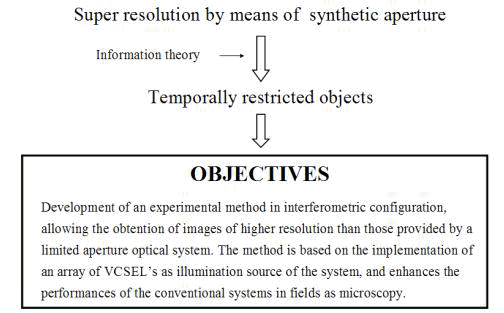
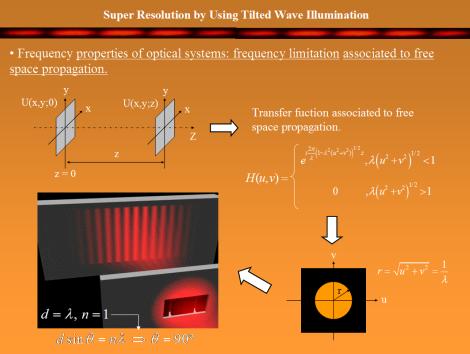
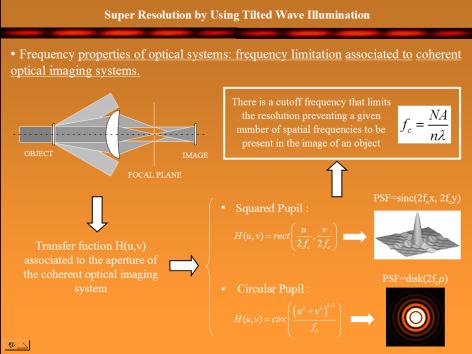
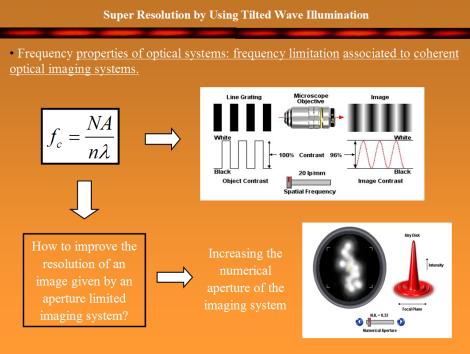


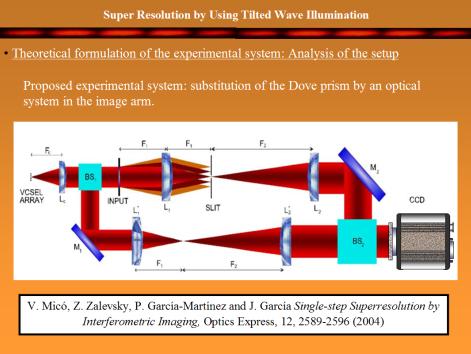
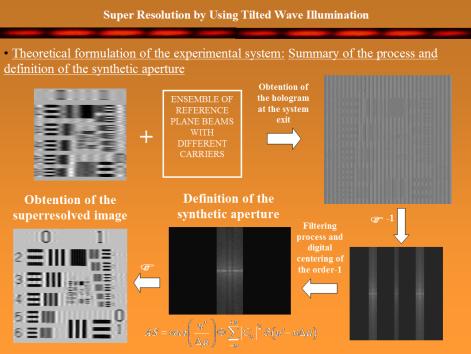
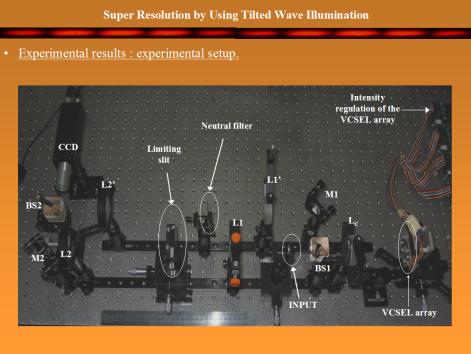
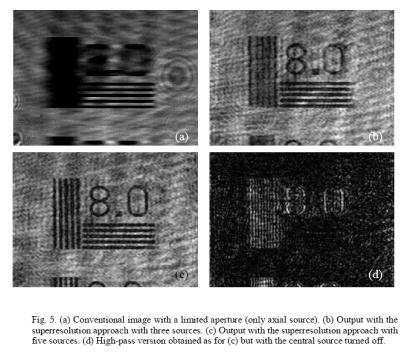
SUPER RESOLUTION USING SPECKLE PATTERN PROJECTION
- The high resolution of the projected speckle pattern demodulates the high frequencies
of the sample and permits its passage through the system aperture.
- The speckle pattern is obtained by free space propagation of the coherent light
impinging on a diffuser.

- A high resolution mask is projected onto the object producing a spread of the angular
spectrum of the sample. This permits the high frequencies of the object to pass through the
limited aperture lens. Later multiplication of the resulting image by a decoding mask recovers
the high frequencies of the object.
- The operation principle involves the illumination of the sampled with a set of high
resolution speckle patterns, each one with a slight lateral displacement. The same speckle
pattern, corrected with the system magnification, serves to decode each frame. The final
reconstructed image is obtained by averaging the images obtained thusly.


SUPER RESOLUTION USING ORTHOGONAL MUTUAL COHERENCE CODING
- The coherence of a light beam is used for encoding object spatial information.
- The method is based on shaping the mutual intensity function of the illumination beam in a
set of orthogonal distributions, each one carrying information of a different frequency
band-pass or spatial region of the input object.


PAPERS ON THE SUBJECT:
- A. Shemer, D. Mendlovic, Z. Zalevsky, J. García and P. García-Martinez, "Superresolving optical sytesm with time multiplexing and computer decoding," Appl. Opt. 38, 7245-7251 (1999).
- A. Shemer, Z. Zalevsly, D. Mendlovic, E. Marom, J. García and P. García-Martínez, "Improved superresolution in coherent optical systems," Appl. Opt. 40, 4688-4696 (2001).
- Z. Zalevksy, V. Eckhouse, N. Konforti, A. Shemer, D. Mendlovic and J. García, "Super resolving optical system based on spectral dilation," Opt. Commun. 241, 43-50 (2004).
- J. García, Z. Zalevsky and D. Fixler, "Synthetic aperture superresolution by speckle pattern projection," Opt. Express 13, 6073-6078 (2005).
- Z. Zalevsky, J. García, P. García-Martínez and C. Ferreira, "Spatial information transmisión using orthogonal mutual coherence coding," Opt. Lett. 30, 2837-2839 (2005).
|














